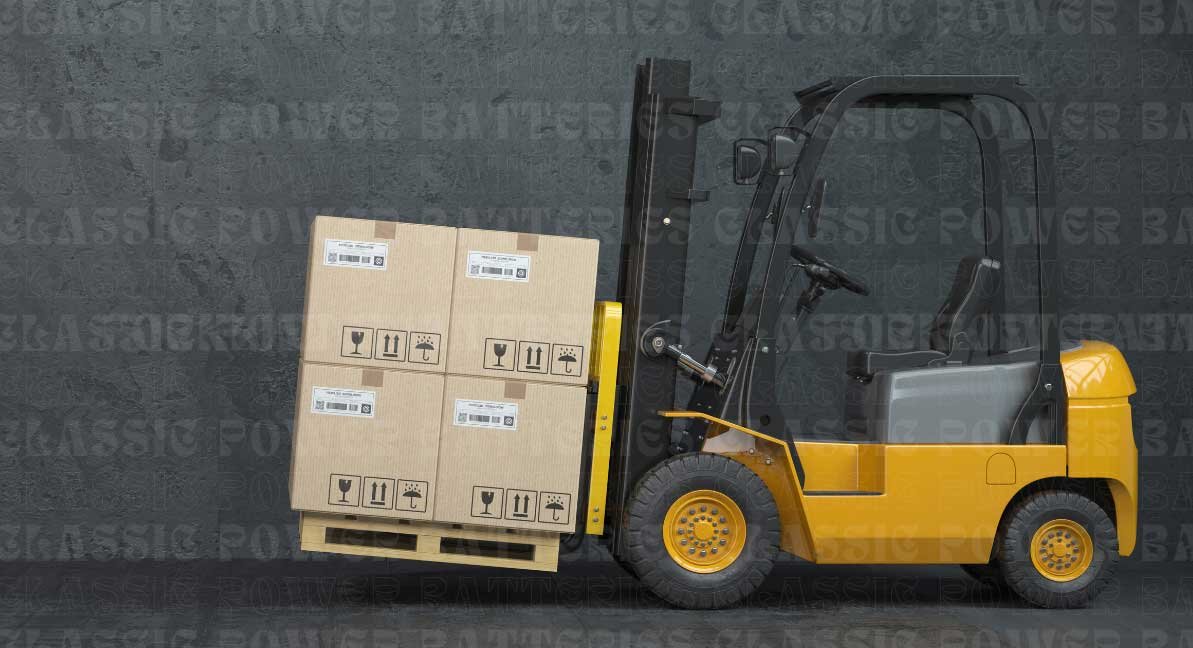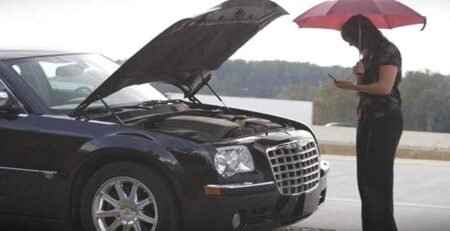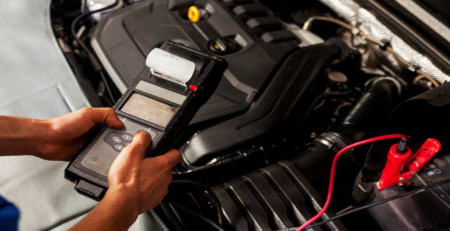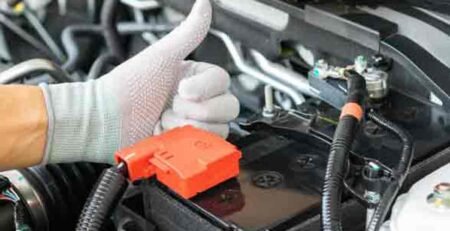Forklift Battery Mastery: 3 Signs It’s Time for a Replacement and DIY Tips
classicpowerbattery.com2024-06-19T12:33:50+01:00Introduction
Hello, fellow forklift aficionados! As seasoned battery experts, we at Classic Power Battery Trading are here to guide you through the essential journey of understanding when and how to replace your forklift battery AND how to maintain it.
In the world of material handling, a reliable battery is the heart of your forklift’s performance. Let’s delve into the telltale signs that indicate it’s time for a battery replacement, how you can tackle this task yourself with confidence, and some crucial maintenance tips to prolong your battery’s lifespan.
Spotting the Signs: When to Replace Your Forklift Battery
1. Diminished Run Time and Power
The first red flag signaling a need for battery replacement is a noticeable decrease in run time. If your forklift isn’t holding a charge as long as it used to or struggles to complete shifts without needing frequent recharging, it’s time to take action. A weakened battery not only disrupts productivity but also poses safety risks, especially in high-demand environments.
DIY Tip: Keep a log of your forklift’s run time and charging frequency. If you notice a steady decline over a few weeks, it’s a strong indicator that your battery is nearing the end of its lifecycle.
2. Sluggish Performance
A forklift that feels sluggish, even after a full charge, is a classic sign of battery deterioration. You might experience slower lifting speeds, reduced acceleration, or difficulty in handling heavier loads. This decline in performance can be attributed to the battery’s inability to deliver sufficient power to the forklift’s motor.
DIY Tip: Perform a voltage check using a multimeter. A fully charged forklift battery should read around 12.6 volts. If your battery consistently shows lower readings, it’s a clear sign that it’s struggling to hold a charge and needs replacement.
3. Visible Damage and Leaks
Physical signs of damage, such as cracks, bulges, or leaks, are immediate indicators that your battery needs replacing. Acid leaks not only compromise the battery’s performance but also pose serious safety hazards. Additionally, corrosion around the terminals can impede electrical connections, further reducing efficiency.
DIY Tip: Regularly inspect your battery for any visible signs of damage. Wear protective gear, including gloves and safety glasses, when handling the battery to avoid exposure to harmful chemicals.
DIY Battery Replacement: A Step-by-Step Guide
Replacing a forklift battery might seem daunting, but with the right tools and precautions, you can do it yourself. Here’s a step-by-step guide to help you through the process:
Step 1: Safety First
Before you begin, prioritize safety. Ensure the forklift is turned off and disconnected from any power source. Wear appropriate safety gear, including gloves, safety glasses, and protective clothing, to guard against potential acid spills and electrical hazards.
Step 2: Gather Your Tools
You’ll need the following tools:
- A wrench set
- A battery lifting device or crane
- A multimeter
- Distilled water (if working with lead-acid batteries)
- Baking soda and water mixture (for cleaning terminals)
- Replacement battery
Step 3: Disconnect the Old Battery
Start by disconnecting the negative terminal (usually black) followed by the positive terminal (usually red). This order minimizes the risk of short circuits. Use a wrench to loosen the terminal connections and carefully remove the cables.
Step 4: Remove the Old Battery
Use a battery lifting device or crane to safely lift the old battery out of the forklift. Forklift batteries are heavy and cumbersome, so ensure you have the right equipment to avoid injury or damage to the forklift.
Step 5: Clean the Battery Compartment
Once the old battery is removed, take the opportunity to clean the battery compartment. Use a mixture of baking soda and water to neutralize any acid residue and prevent corrosion. Ensure the compartment is dry before installing the new battery.
Step 6: Install the New Battery
Carefully position the new battery in the compartment using the lifting device. Align the battery terminals with the corresponding connectors. Reconnect the terminals, starting with the positive terminal (red) followed by the negative terminal (black).
Step 7: Perform a Final Check
Double-check all connections to ensure they are secure. Use a multimeter to verify the voltage of the new battery, ensuring it reads around 12.6 volts when fully charged. This step confirms that your new battery is ready for action.
Step 8: Monitor and Maintain
After installing the new battery, monitor its performance over the next few days. Ensure it holds a charge and delivers the expected run time. Regularly check fluid levels for lead-acid batteries and top up with distilled water as needed.
Maintaining Your Forklift Battery: Tips for Longevity
Maintaining your forklift battery is crucial to ensure its longevity and optimal performance. Here are some essential maintenance tips:
1. Regular Charging
Always charge your battery after each use. Avoid deep discharges, which can shorten the battery’s lifespan. Utilize a quality charger and follow the manufacturer’s guidelines for charging.
2. Fluid Levels
For lead-acid batteries, check the electrolyte levels regularly. The fluid should cover the battery plates. If necessary, top up with distilled water, but never overfill.
3. Clean Terminals
Corrosion on battery terminals can impede performance. Clean the terminals periodically with a wire brush and a solution of baking soda and water. Ensure all connections are tight and free from debris.
4. Temperature Control
Extreme temperatures can adversely affect battery performance. Store your forklift in a cool, dry place. If operating in a hot environment, ensure adequate ventilation to prevent overheating.
5. Equalizing Charge
Periodically perform an equalizing charge on lead-acid batteries. This process balances the charge across all cells and helps prevent sulfation, a common issue that can reduce battery capacity.
6. Load Testing
Regularly perform load tests to check the battery’s capacity. This can help identify weak batteries before they fail completely, ensuring uninterrupted operations.
7. Inspect for Damage
Regularly inspect the battery for physical damage, including cracks or leaks. Promptly address any issues to prevent further damage or safety hazards.
Conclusion: Empower Your Forklift with a Fresh Battery and Proper Maintenance
Recognizing the signs of a failing forklift battery and knowing how to replace it yourself can save you time, money, and downtime. By following these expert tips, you can ensure your forklift operates at peak performance, enhancing productivity and safety in your workplace. Additionally, regular maintenance is key to prolonging your battery’s lifespan and ensuring reliable operation.
Stay charged, stay safe, and keep your forklift running smoothly with these expert tips and DIY guidance from your fav battery experts Classic Power Battery Trading. Forklift warriors, your battery mastery journey begins now!











